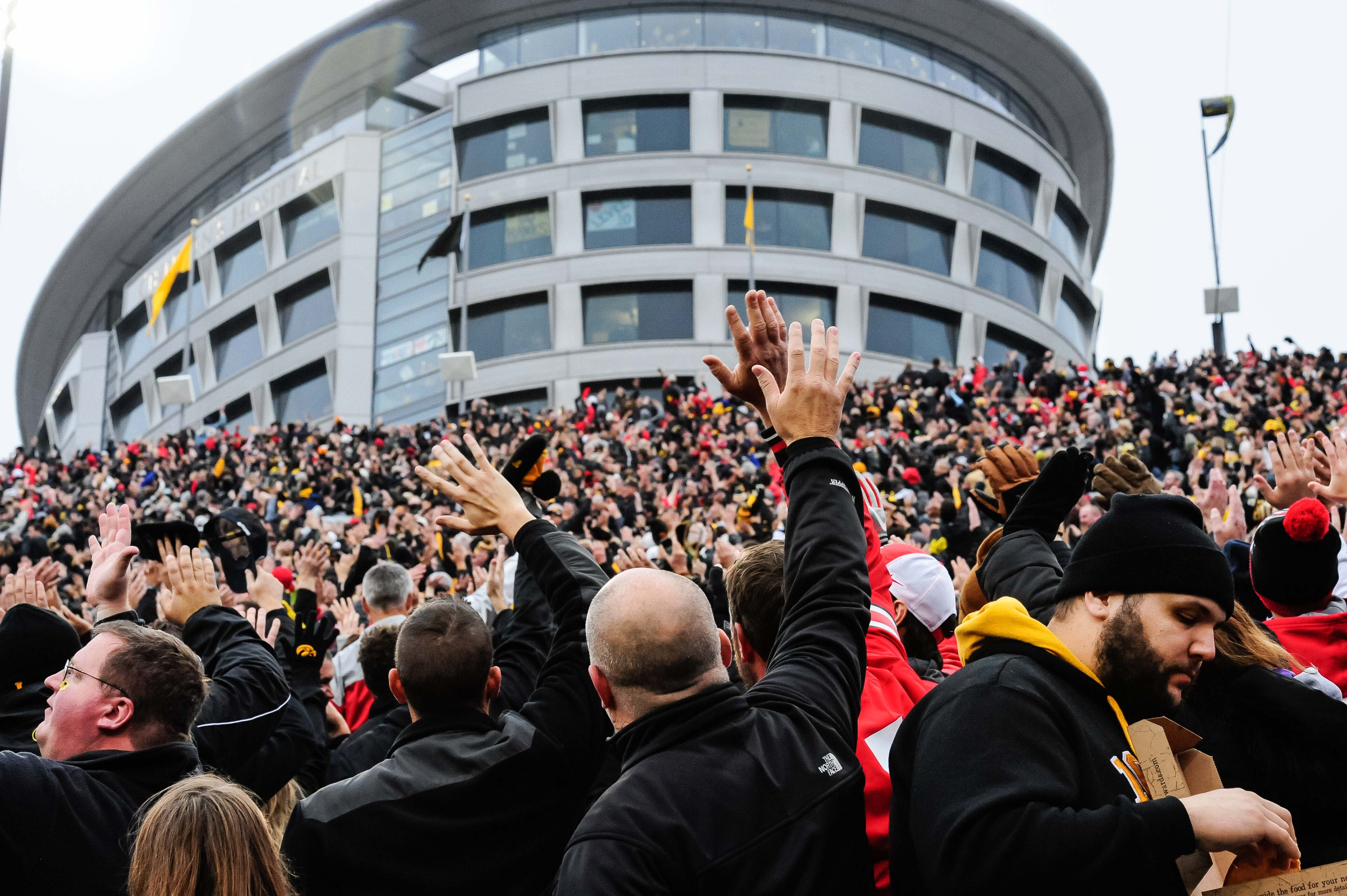Ad Disclosure

The Iowa Wave: The greatest tradition in college football has hit me on a personal level
The first quarter ends and I can feel a catch in my throat. I have to bite my lip to fight off an endless stream of tears I can feel working up inside.
Seven Saturdays I was overcome with emotion and had to take a minute to collect myself. I’m sitting in my apartment 1,200 miles away from Iowa City, but I feel like I’m standing inside the walls of Kinnick Stadium. Each time I saw those 70,000 fans, the players and coaches, even the officials, turn away from the field to wave at the patients in the University of Iowa Stead Family Children’s Hospital, I cried.
Even the opposing teams — Wyoming, North Texas, Penn State, Illinois, Minnesota, Ohio state and Purdue — waved.
On those seven Saturdays I was reminded of my childhood. Those seven incredible days took me back to a time of utter confusion and genuine concern.
When I was young, I woke up in the elevator of Riley Children’s Hospital in Indianapolis, my mother on one side and my father on the other. I had trouble breathing as a kid and would spend several nights wheezing and gasping for air. It was alarming enough that my parents thought taking the 90-mile drive from my rural Indiana home to downtown Indy was necessary.
After a full morning of different breathing tests, X-rays, examinations and the works, I was diagnosed with Asthma, a lung disease that causes difficult breathing.
Concerning? Yes. Life-threatening, at least in my case? No.

My initial arrival at Riley translated to several years of monthly visits to the hospital, everything from a quick 30-minute check-up to a full day of examinations and breathing tests. After awhile those days at Riley weren’t so bad. I’d accepted it as part of my life, and I was fine with it.
About 15 years later my father called me brave for handling everything so well. No tears, no complaining and no tantrums.
But my story isn’t what makes my eyes swell up and my lip quiver every Saturday when I see those fans wave their arms back and forth at Kinnick Stadium. What I saw on those monthly visits; the pain, the sadness and the desperation, from parents and children alike, is the real story.
I always wondered to myself why some of the children I saw spent more time at Riley than I did. I was oblivious to cancer. Chemotherapy wasn’t in my vocabulary. There are plenty of other life-threatening illnesses that I couldn’t understand. I still don’t.
All I knew at that time was that I was going home and those children and parents had overnight bags, some packed for weeks or even months. Some not knowing if or when they’d get to return home again.
“Why do I get to go home and they have to stay?”
I remember asking my father that question one day. He was surprised by my question — after all I was about eight years old — but he answered it about as well as any unexpecting parent could.
“They’re a little more sick than you are, and the hospital just needs a few more days to help them feel better.”
Over time, I’ve thought more and more about my time at Riley, remembering what I saw more than what I experienced. But trying to understand the pain, fear and worry that those children and parents went through is as difficult to understand now as it was when I was a child.
Several years after my experience in Riley Children’s Hospital had ended, someone close to me, a family member, endured a similar path. But this wasn’t Asthma, it was something far more serious.
A cousin spent weeks in another children’s hospital in Indianapolis — Peyton Manning Children’s Hospital to be specific — recovering from frequent seizures and other internal issues. He was there for weeks on end. For the parents, I know those moments felt like an eternity.
Worry never left their minds for the month they spent in the hospital. But, somehow, they always took everything in stride. There was no complaining. There were no tantrums.
Nurses and doctors made examinations as painless as possible. Others working in the hospital tried to make the day-to-day as enjoyable as possible, trying to have fun conversations. Volunteers from across the city — from artists to sports teams to support animals — helped put a smile on every patient’s face inside the building.

That’s what the folks in Iowa City are doing. 70,000 volunteers are taking a minute out of their day to put a smile on the face of a child enduring the unimaginable. They’re providing a glimmer of hope to so many worrying parents.
I reflect on the word my father used to describe me when I paid my visits to Riley.
“Brave.”
I don’t deserve to carry that word with me. Nothing about my experience fits that definition.
Bravery is reserved for the patients inside the Stead Family Children’s Hospital. For the parents, and for the friends and family who continue to cling to hope each and every day. And for the nurses, doctors and volunteers in that building, all trying to make a few children smile under the harshest circumstances.
Iowa football now has a role in that.
There are seven more Saturdays where the Hawkeyes will take the field at Kinnick Stadium in 2018. Even though they can’t see me, I’ll be sitting in my apartment, 1,200 miles away from Iowa City and waving to the Stead Family Children’s Hospital at the end of every first quarter.
And I’ll be crying.
Dustin grew up in the heart of Big Ten country and has been in sports media since 2010. He has been covering Big Ten football since 2014. You can follow him on Twitter: @SchutteCFB